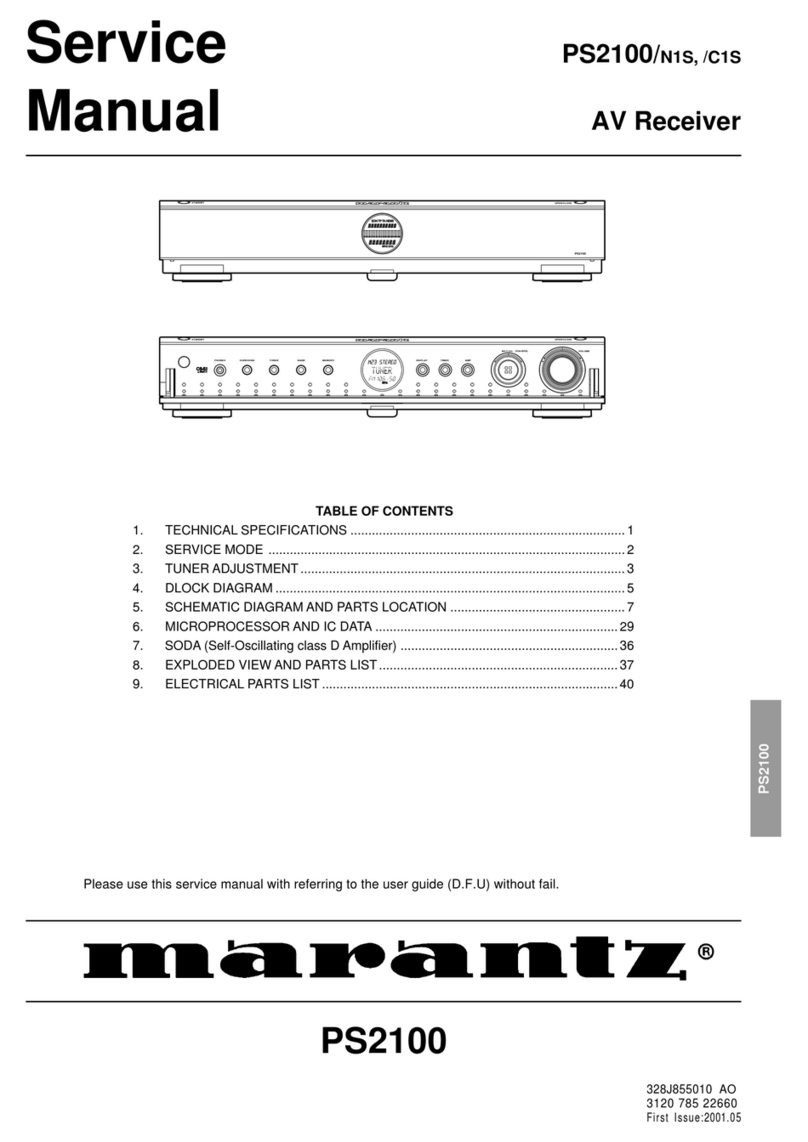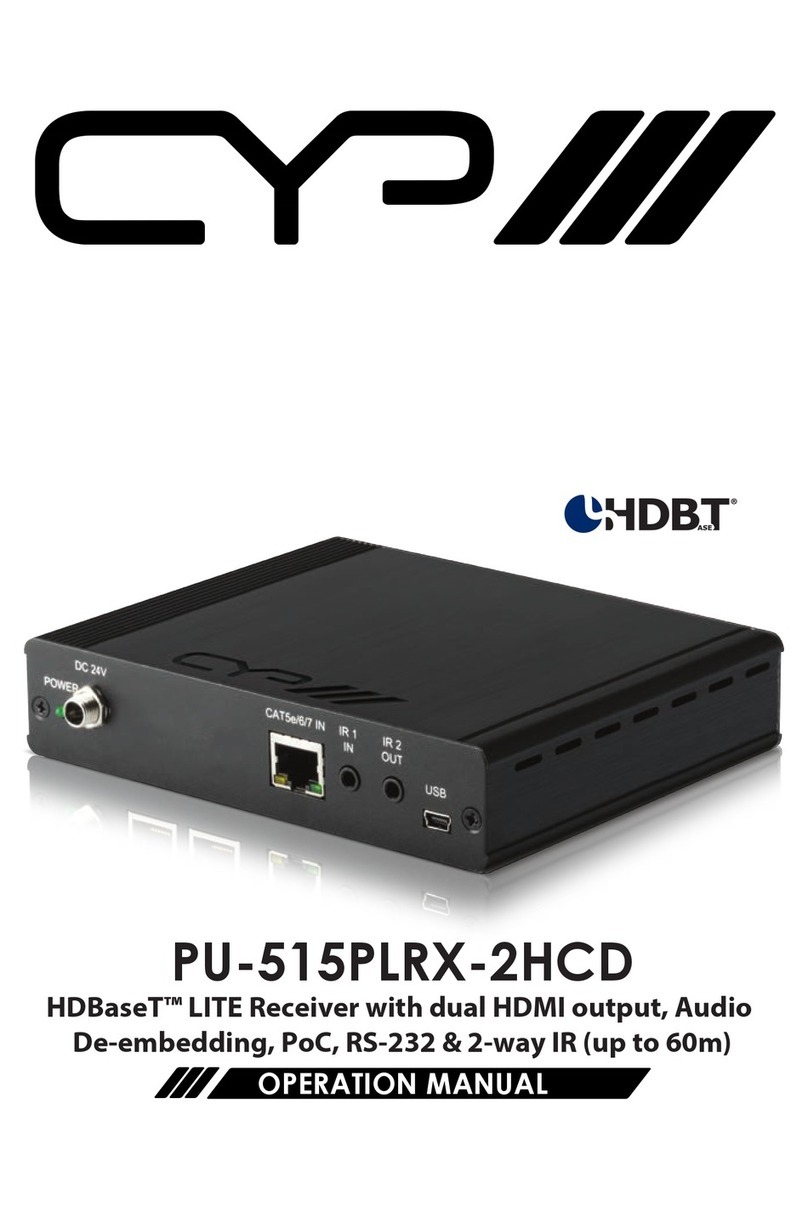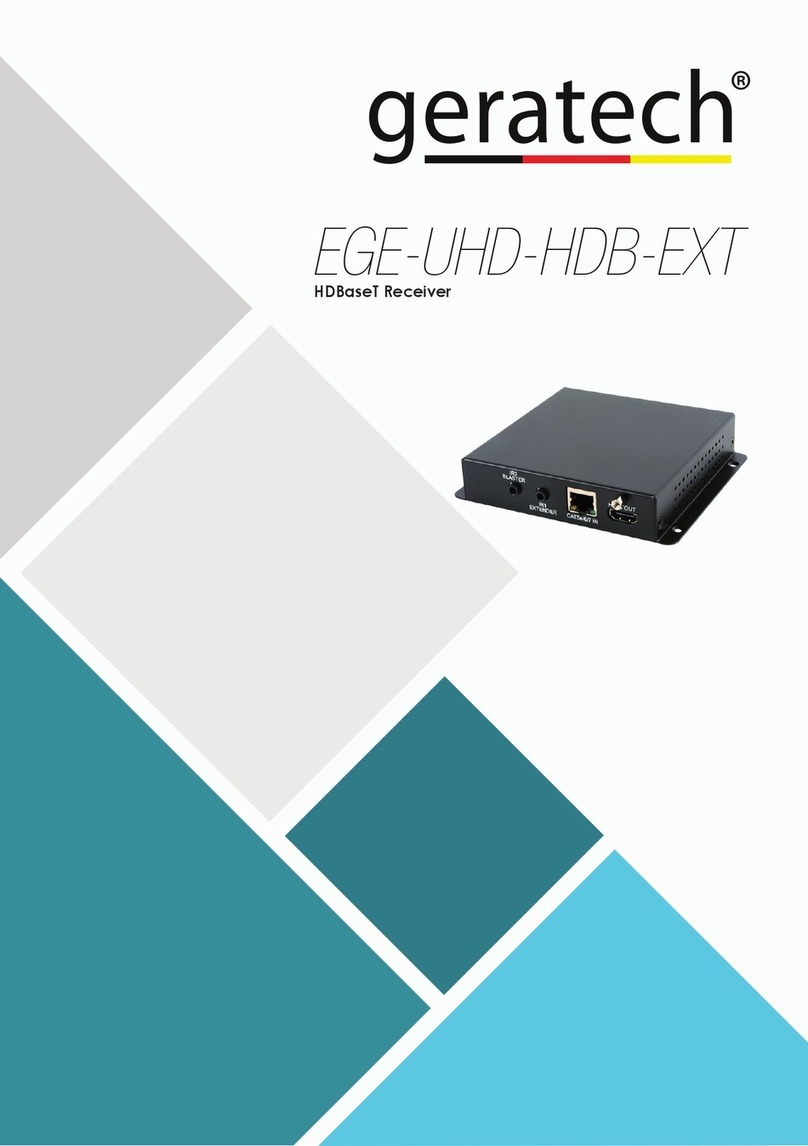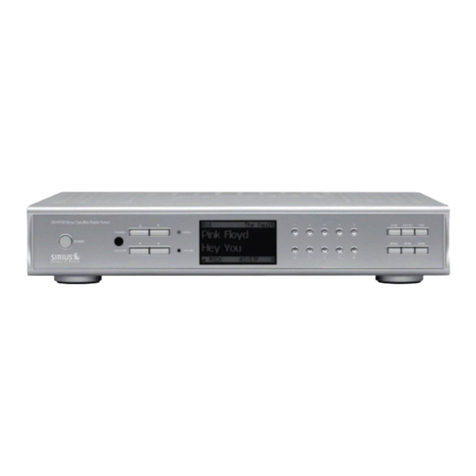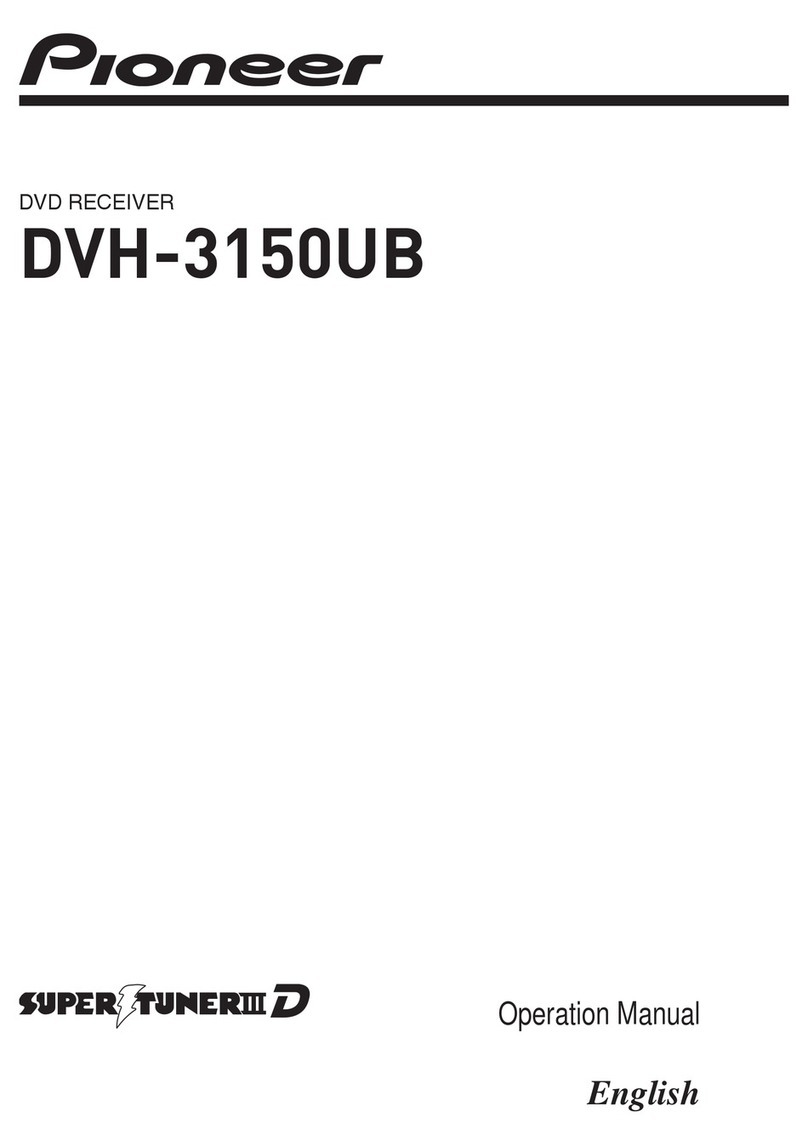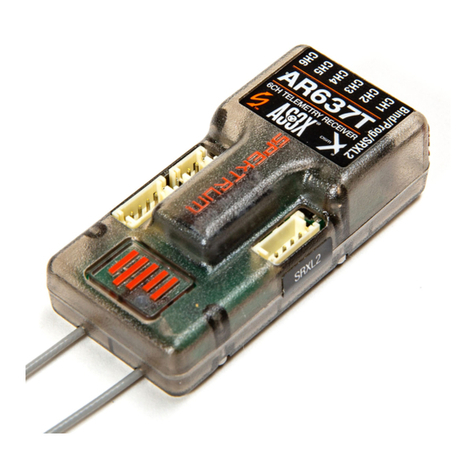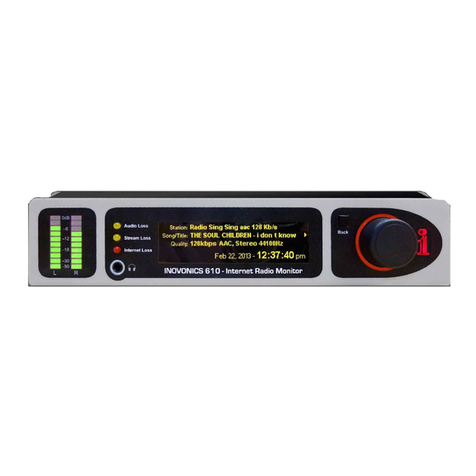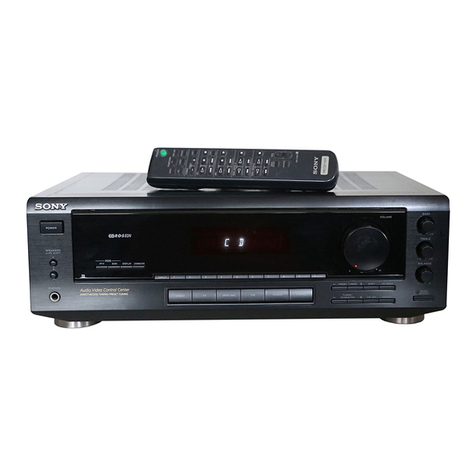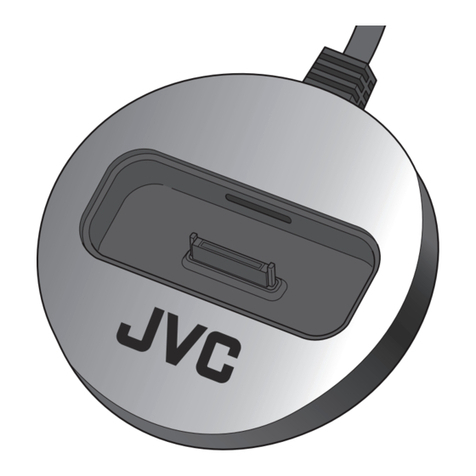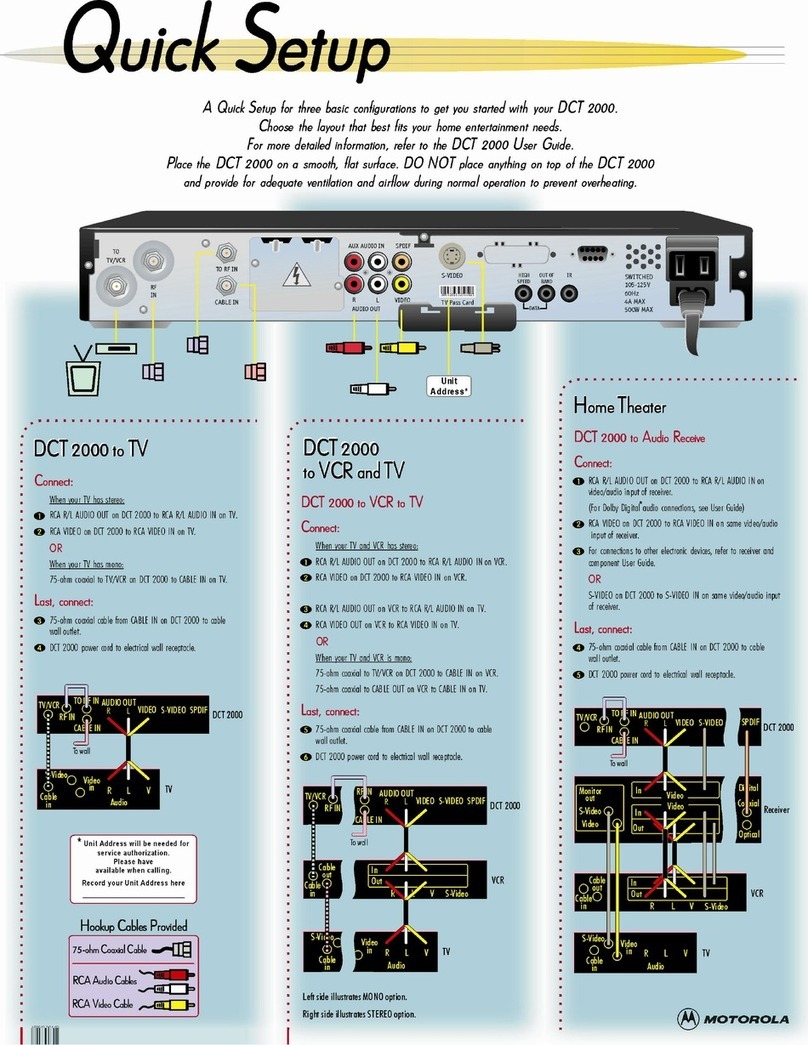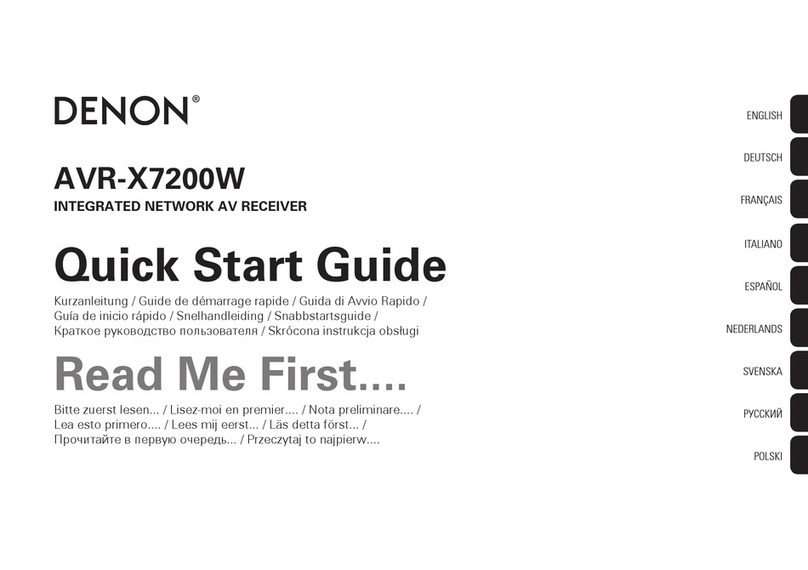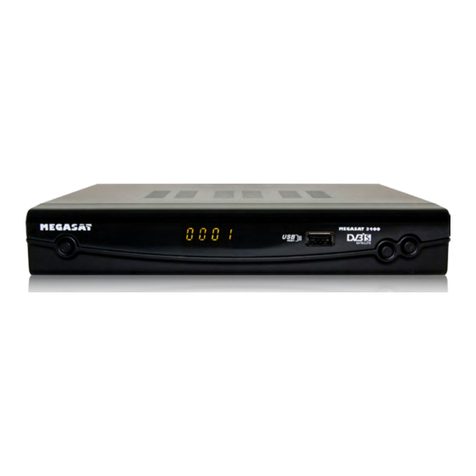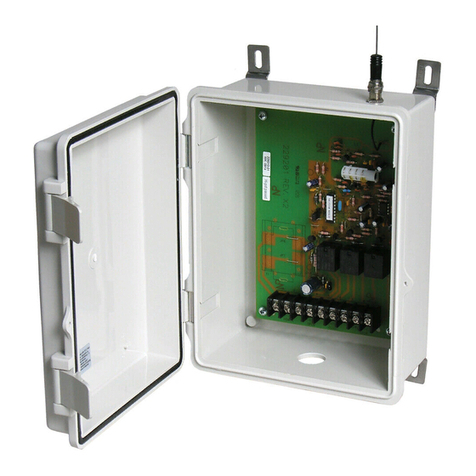Heath Company Heathkit BR-2 Quick setup guide

B..IL Ct{eP,'*n
t$:t J@P{N S T;
S"iBiffr\*'9'{4r
TlF A55EMBI. ING
AND
YOUR U5I
otro
BROADCAST
RECEIVER
MODEL BR.2
BAND
AMATTUR RADIO
.,' vE 3 TS
P.O. Box 662, SARN|A, ONif,

.t.
ASSEMBLY AND OPERATION OF THE
+HEATHKIT BROADCAST BAND RECEIVER
MODEL BR-2
SPECIFICATIONS
Radio
Tuning Range. .550 kc to 1620 kc
I. F. Frequency. . . . ..455 kc
Antenna. Built-in High Sensitivity Rod Type
Speaker (included). . . 5 L/2" PM 4 ohm Voice Coil
Tuner Operation
Output. . . Highimpedancetoany amplifier input with
resistance of 100,000 ohms ormore. 110
V outlet provided for amplifier, phono
player, etc.
Phonograph
Input. . . . 1 megohm high impedance for optimum per-
formance with any good quality crystal or
ceramic phono pickup.
Tube Complement. .1 - 5Y3 Rectifier
1 - 12A6 Beam Power Amplifier
1 - l2AV6Detector, A.V.C. andAudioAmplifier
1 - 128A6 I. F. Ampiifier
1 - 12BEO Pentagrid Converter
Power Requirements. . . ... 105-125 V 50-60 cycles AC 40 watts
Dimensions.... .... 11 t/2"wide,53/4" high, 6 3f4" deep
I
I
I
I
lu
I
I
I
L-

=
& 0scr LLAToR
I ST DETI
o
I + POr Nl 'C'
I2AV6
2ND O€TECTOR &
AUDIO AMPLIFIER OUTPU T
i R AN SFORME R
o
ROD
ANTENNA
PN5
0F t28A6
Q rurrn
IB+
POI NT.A"
I
POWER
TRANSFORMER
swtTcH 4700n - 2w
.o5
MFD
r{
GREEN
DOT
I 2AV6
A,7 MEG
ll- I
lLl
,uf, !
t'oLUM E
t2a6
I
2o
MFD
WIRING OI EXPORT TYPE
110/220 VOLT POWER
TRSSIORMERS
These transfolmers have a dual primary for use on either 110 Volts or 220 Volts
-q'8i:!l'"-
tt
tl
ll
-,t
:J:: r;^,
8+
POIN] A"
PIN 8
OF 5Y3
I CREEN
'-/ DOr ,3
ii,7:-;A
.{rbt l, I
t'dit: fJosc'roron
t2 A6
BEAM POWER
AMPLIFIER
o-r05
FD
SELE CT O R
^/ swtTcH
)'_l
--r
Page 2
4700a- 2W

l"
t,
INTRODUCTION
Although low in price, the Heathkit Model BR-2 Broadcast Receiver is soundly engineered and
is capable of excellent performance. Careful chassis layout, straightforward circuit design,
and specially selected components contribute to this result.
The phono socket at the rear of the chassis can be wired either as a tuner output or a crystal
pickup input for phonograph reproduction, as desired. Complete instructions regarding both
methods ol wiring are furnished with the manual.
If the BR-z is wired as a tuner, it is only necessary to connect a shielded wire between the
phono socket at the rear and any amplifier having a tuner or crystal pickup input. The switch
at the back of the BR-2 must be placed on the downward position when the unit is used in this
manner. The BR-2 will operate as a conventional receiver when the switch is up.
When wired as a phonograph amplifier, theBR-2can be used with any good quality crystalpick-
up. It wili reproduce phonograph records with the switch at the back placed in the downward
position.
The volume control is effective for any of the three functions described above. When used as a
turler, the control can be set to any convenient level sothat the amplifiercan be switched to any
function without change in output level. This feature allows elimination of annoying "blasting"
when the amplifier is switched from "phono" to "tuner. " As a phonograph reproducer, the vol-
ume control is set to a comfortable listening level.
A 110 V AC outlet is provided for convenience. The ampiifier or phonograph player will be
turned off when the receiver is turned off if this outiet is used.
CIRCUIT DESCRIPTION
The Heathkit BR-z Broadcast Receiver is a 5 tube AC operated superheterodyne employing a
highly sensitive built-in rod type antenna. This antenna is a new type allowing performance
comparable to receivers with outside antennas.
The 12BE6 is a multi-grid tube commonly known as a pentagrid converter. Its function is to
amplify the incoming radio frequency (RF)signals and mix them with a signal from the oscilla-
tor, which is also contained in this stage. The cathode, grid 1 and.grid 2 make up the oscilla-
tor, which is the standard Hartley type. Grid 3 is the RF input. Since the oscillator signal and
theRFsignal are both fed tothe tube, both will bepresent. These signals mix in such a manner
that the sum and the difference of the two frequencies are present, as weII as the RF and os-
cillator signal. The oscillator frequency is selected so that it is always 455 kilocycles (kc)
higher than the frequency that the RF section is tuned to. Therefore, the difference frequency
wiII aiways be 455 kc and it is to this frequency that the intermediate frequency (IF)transform-
ers are tuned. This function of changing frequencies is known as the Superheterodyne Princi-
ple. Improved selectivity is obtained due to the fixed tuned IF transformers, which are de-
signed to give optimum performance at one frequency only.
Amplification of the IF takes place in the 128A6 stage. The first IF transformer passes the
455 kc signal and rejects almost all unwanted signals. This signal is connected to the grid of
the 128,4'6 tube. The tube boosts or amplifies the signal and feeds it to the second IF trans-
former, which is connected to the plate circuit of the 128A6. Any residual unwanted signal that
might remain is eliminated by this transformer.
Detection of the signal takes place in the diode section of the 12AV6. When the polarity of the
IF signal is positive, the diodes draw current. When the polarity is negative, the diodes will
not conduct. Therefore, an unidirectional or DC current wiII flow through the diode load, which
is formed by the output section of the second IF traneformer, the 47 KO isolating resistor and
the 1 megohm volume control. The high frequency energy is bypassed to ground through a con-
denser in the second IF. transformer which has very low resistance, or impedance to these fre-
*
L
Page 3

quencies. The value of this condenser is selected so that it will not affect the audiofrequencies
and so the audio will remain and is passed on to the volume control.
The volume control is a fixed resistor with a sliding tap which allows any desired portion of the
signal to be selected. The tap connects to the grid of the 12AV6 through a condenser which
keeps the negative voltage present at the control away from the tube. Audio amplification takes
place in the triode section of the 12AVO and the boosted signal is fed to the grid of the 12A6
beam power amplifier through an isolating capacitor. The condenser keeps the high voltage
present at the plate of the 12AV6 from the grid of the 12AG but passes the audio signal. This
method of energy transfer is known as resistance-capacity coupling, or, just resistance cou-
pling.
A small amount of voltage at the grid of the124'6controls a substantial amountof current in the
tube. When the audio voltage becomes positive, the current increases, and the current de-
creases when thevoltagebecomes negative. These currentvariations pass through the primary
of the output transformer, wldch steps the high voltage down and couples it to the loudspeaker .
The speaker is an electrical-mechanical device. When a voltage is presented to its voice coil,
the paper cone moves. A permanent magnet is installed in the speaker. The voice coil is an
electromagnet. Any voltage applied will cause the magnets to attract or repel each other, de-
pending on the polarity of the voltage. Since the electromagnet coil is connected directly to the
paper cone, it will move proportionally to the voltage applied. Motion of the cone causes air to
move in a similar manner. Air movement of this type is detected by the ear as sound.
Power for the receiveris obtained from the power supply, which involves the powertransform-
er, the 5Y3 tube, and the electrolytic filter condenser. The transformer supplies filament
voltage for all tubes, and high AC voltage to the plates of the rectifier. The rectifier action is
exactly the same as that taking place in the diode section of the 12AV6, described above. The
output voltage is a series of positive pulses, one for each half of the 60 cycle line waveform.
The voltage applied to the tubes must be free of these pulses, or ripple, or only a load buzz will
be heard in the speaker. It is for this reason that the high capacity filter condenser is used.
The first section of the condenser charges to the voltage from the 5Y3 tube. When the tube is
not conducting, the condenser starts to discharge through the load presented by the other tubes
in the receiver. However, the next positive charge takes place before the condenser has time
to discharge fully, and so the voltage is smoothed out somewhat. Final filtering action takes
place in the second section of the filter condenser. This section is isolated from the first by
the 4?00O resistorwhich tends to help smooth the voltage because it resists current variations
in the filter circuit. The second section of the condenser smooths out any variations passed by
the first part of the condenser, and the voltage output is "pure" direct current (DC).
An automatic volume control (AVC) circuit is employed in the BR-2 receiver. Fading, blasting
and other undesirable effects are eliminated or substantially reduced by the action of this cir-
cuit. AVC operates on the principle of reduced tube gain when negative voltage or "bias" is
applied to the control grid. In this case, the negative voltage is obtained from the second de-
tector stage of the receiver. As previously mentioned, the diodes of the 12AV6 tube draw cur-
rent when a station is tuned in. The stronger the signal strength of the station, the more cur-
rent the diodes will conduct. This current develops a negative voltage across the volume con-
trol which is proportional to the current. An isolating network consisting of a 3.3 megohm re-
sistor and a.05 pfd condenser is used to filter out the audio voltage, and one end of the network
is connected to the 'rhottt side of the volume control. The grids of the 12BEO and 128.{6 RF and
IF tubes connect to the opposite side of the network. When a strong station is tuned, the nega-
tive voltage is relatively high, and so the gain of the RF and IF tubes will be low. If a weak
station is tuned, the voltage is lower, and the gain of the tubes higher. Therefore, strong and
weak stations will tend to maintain approximately the same output level. AIso, station fading is
reduced, due to the reduction in bias when the signal becomes weaker, etc.
The 12AV6 and 1246 audio amplifier stages operate at a "fixed" bias level. "Contact bias" is
used in the 12AV6. A very high value of resistance in the grid circuit of a tube will cause the
Page 4

*
grid to become negative. This is due to the fact that the gridof the tube always draws a minute
amount of current caused by collection of stray electrons from the cathode by the grid. 4.1
megohms is connected between the grid of the 12AV6 and ground and this allows the grid to de-
velop a relatively high negative voltage.
"Cathode bias" is employed in the 124'6 stage. A 470 Q resistor is connected between the cath-
ode of the 12,{6 and ground. The tube draws a large amount of current and the drop across the
resistor wiII cause the cathode of the tube to be positive in respect to ground. The grid returns
to ground through a relatively lowresistance to avoid contact bias effects. Sincebias is always
the voltage between the cathode and the grid of a tube, the grid is negative in respect to the
cathode, and the stage is properly biased. A large capacity condenser is connected across the
cathode resistor to bypass the audio voltage around the resistor.
NOTES ON ASSEMBLY AND WIRING
The Heathkit BR-2 Broadcast Receiver, when constructed in accordance with the instructions
in this manual, is a high quality receiver capable of many years of trouble free service. We
therefore urge you to take the necessary time to assemble and wire the kit carefully. Do not
hurry the work, and you will be rewarded with a greater sense of confidence both in your re-
ceiver and your own ability.
This manual is suppiied to assist you in every way to complete the receiver with the least pos-
sibl,e chance of error. We suggest that you take a few minutes now and read the entire manual
through before any work is started. The enlarged pictorials are handy to attach to the waII
above yourwork space. Theiruse wiII greatly simplify the completionof the kit. Thediagrams
are repeated in smaller form rvithin the manual. We suggest that you retain the manual in your
files for future reference, both in the use of the BR-2 and for its maintenance.
UNPACK THE KiT CAREFULLY AND CHECK EACH PART AGAINST THE PARTS LIST. In
so doing, you wiil become acquainted with each part. Refer to the charts and other information
shown on the inside covers of the manual to help you identify any parts about which there may
be a question. If some shortage is found in checking the parts, please notify us promptly and
return the inspection slip with your letter to us. Hardware items are counted by weight, and if
a"few are missing, piease obtain them locally if at all possible,
CAUTION: The rod antenna, tuning condenser, Ioudspeaker, and oscillator coil are quite deli-
cate, and should be handied with care. The tuning condenser shouid be kept fully meshed until
construction is completed, to avoid bending the plates. The rod antenna can be damaged by a
sharp blow of any kind, so it should be placed where it will not be disturbed or accidentally
dropped.
Read the note on soldering on the inside of the back cover. Crimp all leads tightly to the ter-
minal before soldering. Be sure both the lead and the terminal are free of wax, corrosion, or
other foreign substances. Use only the best rosin core solder, preferably one containing the
new activated fluxes such as Kester "Resin Five, " Ersin "Multicore, " or similar types.
NOTE: ITLL GUARANTEES ARE VOIDED AND WE WILL NOT REPAIR OR SERVICE
INSTRITMENTS IN WHICH ACID CORE SOLDER OR PASTE FLIIXES HAVE BEEN USED.
WHEN IN DOUBT ABOUT SOLDER, IT iS RECOMMENDED THAT A NEW ROLL PLAIN-
LY MARKED ''ROSIN CORE RADIO SOLDER'' BE PURCHASED.
Resistors and controls generally have a tolerance rating of. +2070 unless otherwise stated in the
parts list. Therefore a 100 KQ resistor may test anywhere from B0 KO to 120 KA. (The ietter
Kis commonly used to designate a multiplierof 1000.) Tolerances on condensers are generally
even greater. Limits of +10070 and -50V0 are common for electrolytic condensers. The parts
furnished with your Heatbklt have been specified so as to not adversely affect the operation of
i" the finished receiver.
Page 5

In order to expedite delivery to you, we are occasionally forced to make minor substitutions of
parts. Such substitutions are carefully checked beforethey are approved and theparts supplied
will work satisfactorily. By checking the parts list for resistors, for example, you may find
that a 5.1 megohm resistor has been supplied in place of. a 4,7 megohm as shown in the parts
list. These changes are self evident and are mentioned here only to prevent confusion to you
in checking the contents of your kit.
We strongly urge that you follow the wiring and parts layout shown in this manual. The posi-
tioning of wires and parts is quite critical in this instrument, and changes may seriously affect
the characteristics of the circuit.
STEP-BY-STEP ASSEMBLY INSTRUCTIONS
The following instructions are presented in a simple, logical, step-by-step seqqence to enable
you to complete your kit with the ieast possible confusion. Be sure to read each step all the
way through before you start to do it. When the step is completed, check it off in the space
provided.
We suggest that you do the following before any work is started:
1. .select from the large fold-in pictorials included with this manual the diagram applying to
the steps being worked on. Study them carefully so that you are completel,v familiar with
the layout. Attach these diagrams to the waII above your work bench.
2. Go through the entire assembly and wiring instructions and cross out the steps that do not
apply to the type of wiring you have chosen in respect to "tuner" or "phonograph reproducer"
operation. This is an excellent time to read the entire instruction section through and fa-
miliarize yourself with the procedure
3. Layout all parts so that they arereadiiy available. Referto the general information inside
the front and back covers of this manual to help you identify the components.
In assembling the kit use lockwashers under aII nuts. Tube sockets are mounted inside the
chassis; the Condenser mounting wafer is mounted above or on top of the chassis. AlT-screws
are mounted with the heads on top of the chassis, excEpF those that mount the tuning condenser
assembly. Other details of construction are included where pertinent in the instructions.
The hardware can be identified as follows: 3-48 screws and nuts * smallest size. 6^32 x3/16
screws - medium size, short length. 6-32 x 3/B screws and nuts - medlum size, long length '
B-32 screws and nuts - large size.
( ) place the chassis upside down on the bench. Note that one apron on the chassis has six
small identical holes located in it. PIace this side nearest you. The chassis will then be
orientedcorrectly with thebottom chassis diagram, Pictorial l appearing on thelarge fold-
in sheet.
( ) Refer to Figures 1 and 2, and note that the contacts on the tube sockets are numbered con-
secutively in clockwise sequence when viewed from thebottomof the socket. Also, notethe
kepvay between contacts 1 and B on the octal sockets. Mount an octal socket in hole D, Io-
cating this ke1'way as shown in Pictorial 1. Use 6-32 hardware, place a lockwasher under
the nut, and tighten securely.
( ) In similarfashion, mount.octal tube socket E so that its keyr,vay is properly oriented. Note
that this socket is mounted with the kepvay in the same direction as D.
( ) Mount a ? pin miniature socket in hole A, making sure that the gap between pins 1 and 7 is
Iocated as shown. Use 3-48 hardware. No lockwashers are used with the 3-48 screws'
( ) Mount ?pin mini.ature socket B in a similar manner, noting that the gap between pins 1 and
7 is located in the same direction as A.
Page 6

Mo"
'fN;"
o^A
[,ffiP
*
no ^.0
U Oru
s-,G'e %
oWl o
o@:9,mr#m
R@ %w
@-o
)1
PICTORIAL 1
PICTORIAL 2
Note: The above diagrams are repeated in the largefold-inpictorials included with this manual.
I
it
oo
aS,
v/
'bas
tsl
'ffi
@[it
@ {.,T,/
da
?m.
'6 '€ nn
po
eQ fo
eS
Page 7

7
GROUND
(
(
(
(
(
'OCKE T
PINS A5
NU/t4 BEPED
/(EYthAy
TUBE
SOCKE T
Figure 1Figure 2
) Place a?pin miniature socket in holeC, placing the gap sothat it faces socketE, asshown.
) The condenser mounting wafer is mounted on top of the chassis in hole K next. Use 6-32
hardware with lockwashers underthenuts. Make surethat the side with onehole in it faces
hole Z.
) Ptace the 110 volt socket in location F and secure with 6-32 hardware.
) Insert the 3/8" rubber grommet in hoie G.
) Mount the phono socket atH, with the socketon the inside of the chassis. Orient the socket
as shown in Pictorial 1.
) The DPDT slide switch mounts in hole J. When tightening the screws, make sure that the
nuts are oriented in a manner which will allow full travel of the moving element.
) Secure the power transformer on top of the chassis as shown in the pictorials. Use 8-32
hardware. The black and the green leads are placed through hole U, and the red, red-
yellow, and yellow wires through hole V.
) The electroiytic filter condenser is mounted
on top of the chassis through the wafer al-
ready mounted at hole K. The I marked
terminal must face the holes B and M, as
illustrated on Pictorial 1. Refer to Figure
3 to identify the various terminals. Secure
the condenser to the wafer by twisting each
of the three mounting lugs about 1/B turn
with pliers. HoId the condenser firmly a-
gainst the wafer while twisting the mounting
lugs. Figure 3
( ) Mount the four lug input IF transforrner in hole L. This transformer is placed so that the
green dot is next to pin 5 of socket A. Holding the transformer securely in place with your
fingers, push the mounting clip through the two remaining slots in the chassis. Push one
side down until the clip locks in place on
one side of thetransformer. Then push the
other side downwith a screwdriver until the
end of the clip locks in place at the other
side of the transformer. Refer to Figure 4
as the clip mounting procedure is clearly
illustrated.
( ) In a similar manner, mount the 5 lug output
IF transformer in hole M. The green dot
must be located next to pins 5 and 6 of tube
socket C.
o!1o
"xo
Page B

()
() Mount the multi-Iug terminai strip at hoie N, using 6-32 screw, lockwasher and nut. Check
Pictorial 1 to make sure that the terminal strip is correctly positioned.
Identify the output transformer, the component with four wire leads. Mount this unit so
that the red and blue leads are facing inwards toward the tube sockets. The bolt nearest
hole Y should be inserted through the one-lug terminal strip X, the chassis, the output
transformer, a lockwasher and a 6-32 nut. Check Pictorial 2 to see how lug X is located.
The nuts need not be secured too tightly as yet, because the loudspeaker will be mountei
with these same bolts later on. The speaker is quite delicate and might be damaged in the
process of construction if mounted at this time.
Tuning condenser assembly mounting now takes place. The condenser is mounted on top of
()
the chassis with the shaft pointing outward, as shown on Pictorial 2. Refer to Figure 5 to
seehow the various components are mounted underneath the chassis by the tuningcondens-
er assembly mounting screws. A 6-32 x3/LG screw is pushed through a lockwasher, the
mounting lug on oscillator coil P, the chassis hole nearest hole U and into the appropriate
hole in the tuning condenser frame. A 6-32 x3/16 screw is placed through the solder lug
R, the hole in the chassis nearest tube socket A and into the corresponding hole in the con-
denser frame. The cabie clamp Q is secured by a 6-32 x 3/B screw and lockwasher in the
remaining hole. Leave this screw loose, for it wiII be necessary to run wires through the
clamp later on.
( ) Place the B-32 x 1/B set serew in the hole in the bushing at the center of the large dial pul-
Iey and placethe pulley onthe shaft of the tuning condenserwith the bushing pointingtoward
the tuning condenser frame. The opening in the pulley should be pointing straight up when
the tuning condenser plates are fuiiy meshed. With the outside edge of the bushing flush
with the edge of thelargetuning condensershaft, tighten the setscrew. Leave the condens-
er plates meshed until the set is completed in order to protect them from damage.
\->
d
t
*Figure 6
the dial plate, using 6-32 hardware. Refer
() Install the two dial plate hbunting brackets on
to Figure 6.
.,*...N'
\\i \,\l ,L'1ril1
__o;--
I
I
Figure
Page 9

( ) Mount the diaiplate as shown andsecurethe assembly inpiace onthe chassis. Four screws
are used to stabilize the entire assembly.
( ) Mount the volume control W in hole Z, placing the 3/B lockwasher under the nut as sliown
in Figure ?. The three lugs should face down toward the hole Y in the chassis.
'!i::li
ffi\
fa (Fair-'-^
qry*
"Z"'rlf,%,
The preliminary assembly is now completed, and the
Figure 7
chassis is ready for wiring.
WIRING OF THE BR-2 RECEIVER
NOTE: ALL GUARANTEES ARE VOIDED AND WE WILL NOT REPAIR OR SERVICE
INSTRUMENTS IN WHICH ACID CORE SOLDER OR PASTE FLTIXES HAVE BEEN USED.
WHEN IN DOUBT ABOUT SOLDER, IT IS RECOMMENDED THAT A NEW ROLL PLAIN-
LY MARKED ''ROSIN CORE RADIO SOLDER'' BE PURCHASED.
The figures on the opposite page are pictorial representations of the completed BR-2 receiver
wired for tuner arrd for phonograph operation, respectiveiy. We again suggest -that you use the
large fold-in pictorials for reference as the work progresses. They are duplicates of the fig-
ures shown on Page 11.
Read the notes on the inside rear cover concerning wiring and soldering.
Refer to Pictorial 1. Note that each component part has been given a code designation which
corresponds with the identification used during the assembly of the kit. In addition, each ter-
minal on the part has also been assigned a number.
When the wiring instructions read, "Connect one end of. a 470 O resistor to EB (S), " it will be
understood that the connecti.on is to be made to cont'act number B on socket E. The abbreviation
"S"indicates that the connection should be soldered. In some cases, morethan onelead is con-
nected tothe sameterminal. The terminal should not be soidered until thelast lead i.s connect-
ed, and the abbreviation "NS" is used to indicate this.
Unless otherwise indicated, all wire used is insulated. Bare wire is used only where the lead
Iengths are short and the possibility of short circuits non-existent.
Leads on resistors, condensers and transformers are generally much longer than they need to
be to make the indicated connections. In these cases, the excess leads should be cut off before
the part is added to the chassis. Not only does this rnake the wiring much neater, but in many
instances the excessively iong leads will actually interfere with the proper operation of the re-
c eiver.
Pictorials 3 and 4 indicate actual chassis wiring, designate values of the component parts, and
show the color coding of leads where pertinent.
../
We very strongly urge that the chassis layout, lead placement, and grounding to chassis, as
shown in these diagrams be followed exactly. While this arrangement may not be the only way
in which the receiver may be wired, it is the result of considerable experimentation and trial.
If followed carefully, it will result in a highly sensitive receiver, free of instability and hum.
Page 10
oR f-l
r \)/ |
rl
(01
\l
tl
\)
\J
.,u3,
@@
t_ -.

t*
b
PICTORIAL 3
@
a
ra
(:@3)
'7o'
%@ "ffi"
IPICTORIAL 4
Page 11

Occasional notations will be made, describing the function of various circuits as they are com-
pleted. These wiII help you to realize the function of each circuit to a greater extent.
()
STEP-BY-STEP WIRING INSTRUCTIONS
Twist together the two green leads of the power transformer coming through hole U. Cut
these leads to length sufficient to reach A3 and A4. Strip and tin the leads. Connect one
lead to A3 (NS) and the other lead to .A.4 (NS).
connect a short piece of bare wire between A3 (NS) and solder lug R (NS).
()
( ) Twist together two pieces of wire about 3" long. Strip all four ends. Connect one end of
one wire to A3 (S) and the adjacent end of the other wire to A4 (S). At the other end of this
twisted pair, connect either wire to 83 (NS) and the other wire to 84 (NS).
( ) Likewise, twist together two pieces of wire about 4" long. Strip ali four ends. Connect one
dnd of one wire to B3 (S) and the adjacent end of the other wire to 84 (S). At the other end
of this twisted pair, connect either wire to C3 (NS) and the other wire to C4 (NS).
( ) In a similar manner, twist together two pieces of wire about 5" long. Strip aII four ends .
Connect one end of one wire to C3 (S) and the adjacent end of the other wire to C4 (S). At
the opposite end, connect either wire to E2 (S) and the other wire to E? (S).
This completes the filament wiring of the radio frequency (RF)and audio frequency (AF) ampli-
fier tubes in the receiver. 12.6 volts AC from the power transformer is applied to the heaters
of the tubes, which in turn heat the cathodes.
( ) fwist together the two yellow leads of the power transformer coming through hole V. Cut
these leads to length suJficient to reach DB and D2. Strip and tin the leads. Connect one
lead to DB.(NS) and the other to D2 (S).
( ) nun thered-yeliow Iead of the powertransformerto lug Klon the filtercondenser(S). Heat
the lug and the condenser mounting wafer with the soldering iron until the solder flows
smoothly over the wire, the lug, and onto the wafer. (If a fiber wafer is furnished, run a
wire from K1 (S) to D12 (S).
( ) Run one red lead of the power transformer to D4 (S).
( ) Attach the other red lead of the transformer to DG (S).
( ) Cut one of the black wires coming through hole U to sufficient length to reach F2. Strip,
tin and connect the wire to F2 (NS).
( ) The otherblack wire is cut tolength sufficient to reachFl. Strip, tin and connect this wire
to Fl (NS).
( ) Connect a wire between DB (S) and K r (NS).
( ) Attach the red wire of output transformer CC to K r (NS).
( ) Connecta4700 O 2wattresistor (yellow-violet-red) from Kr (NS) toKr (NS).
The power supply is now wired. The red wires of the power transformer apply high AC voltage
to the plates of the 5Y3 rectifier tube. The yeilow wires furnish 5 volts AC for the filaments of
therectifier. Thered-yellow wire furnishes a return path to ground forthe plate currentdrawn
by the 5Y3 tube. The r terminal of filter condenser K is the input filter, and the r terminal is
the output filter section. The 4700 Q resistor isolates the two sections and tends to resist any
AC variations superimposed on the DC, thus providing"pure"orwell filtered DCvoltage for the
high voitage cilcuits. / \.
Page 12

5
NOTE: THE WIRING OF THE RF STAGES IS READY TO BE STARTED. FOR THE BEST
RESULTS, IT IS MOST IMPORTANT THAT ALL WIRES AND COMPONENT LEADS BE KEPT
AS SHORT AND AS DIRECT AS POSSIBLE.
( ) Run a wire from A7 (S) to the tuning condenser lug appearing through hole S (NS).
( ) Connect a short piece of wire from oscillator coil Pl (S) to A2 (S).
( ) Place a wire from P2 (S) to the lug on the tuning condenser appearing through hote T (S).
( ) Connect a 22 KO resistor (red-red-orange) from lug R (NS) to .A'1 (NS).
( ) Install a.05 p,fd condenser between iug R (NS) and A6 (NS). The outside foil, or black band
should face lug R as shown in Pictorial 1.
( ) Run a short piece of bare wire from P4 (S) to lug R (S).
( ) Connect a short piece of bare wire from P3 (S) to A1 (S).
( ) Ptace a very short piece of bare wire from A5 (S) to IF transformer L lug 1 (green dot
marked terminal) (S).
( ) Connect a wire from 4.6 (S) to BO (NS).
( ) Connect a wire from L2 (S) to M4 (NS).
( ) Run a piece of bare wire from L4 (S) and terminal lug N1 (NS).
( ) Place a very short piece of bare wire from L3 (S) to 81 (S).
The first detector-osciLlator-mixer stage is now completed. The oscillator coiI, the 22 K0
resistor, and the rear section of the tuning condenser make up the oscillator circuit. The rod
antenna, which wiil be installed later, and the front section of the tuning condenser tune the fre-
quency of the desired station and so act as the first detector. Mixing action takes place within
the 12BE6 tube itself , and the resultant 455 kc IF frequency is selected by input IF transformer
L.
( ) Connect a bare wire from 82 (S) to the center post of socket B (S).
( ) Place a bare wire from Bb (S) to M3 (S).
( ) InstaII a 68 O resistor (blue-gray-black) from B7 (S) to N2 (NS).
( ) Connect a wire from M6 (S) to N2 (NS).
( ) InstalL a 47 KQ resistor (yellow-violet-orange) from M2 (S) to N3 (NS).
( ) Run a bare wire from Ml (green dot) (S) through C5 (NS) and to C6 (S). Now solder C5.
( ) place a .05 pfd condenser between Nl (NS) and N2 (NS). The black band faces N2.
( ) Install a 3.3 megohm resistor (orange-orange-green) from N1 (NS) to N3 (NS).
The 128A6 IF amplifier stage is almost complete at this time. The function of this stage is to
amplify the 455 kc signai that has been pre-selected by the first IF transformer. The output of
the 128A6 tube drives the output IF transformer at a considerably higher level than that found
in the first IF transformer, for the tube has a substantial amount of gain.
t
h
F*
*
Page 13

(
(
) Instalt a 220 KO resistor (red-red-yellow) from C7 (NS) to E4 (NS).
) Place a 470 KQ resistor (yellow-violet-yellow) from Eb (NS) to Iug E10 on the tube socket
mounting bracket (S).
) Connect a .02 pfd condenser from C? (S) to E5 (S). The black band faces ( ?.
) Run a short piece of bare wire from C2 (NS) to the center post of socket C (S).
) InstaII a 4.7 megohm resistor (yellow-violet-green) from C1 (NS) to C2 (S).
) Cut the blue lead of the output transformer CC to length sufficient to reach E3. Strip and
tin the lead. Connect this wire to E3 (NS).
( ) Install a 470 Q 1 watt resistor (yeilow-violet-brown) from EB (NS) to ltrg 811 (S).
( ) Connect a wire from Eg (S) to filter condenser terminal K - (S).
( ) Place a short piece of bare wire between El (S) and lug E9 (NS).
( ) Connect a 15 KO 2 watt resistor (brown-green-orange) from K r (NS) to E6 (NS). This pin
makes no conneetion to the 12.4'6 tube and so is used as a tie point.
( ) fnstatt a .005 pfd condenser from E3 (S) to K r (S). The black band faces condenser K.
( ) Run a wire from K r (NS) to output IF transformer M lug 4 (S).
( ) Connect a bare wire from slide switch J4 (S) to phono socket H1 (NS).
IF THE RECEIVER IS TO BE USED AS A TUNER THE STEPS LISTED BELOW SHOULD BE
FOLLO\MED. IF DESIRED TO USE THE RECEIVER AS A PHONOGRAPH REPRODUCER,
THESE STEPS DO NOT APPLY. STEPS APPLYING TO PHONO WIRING FOLLOW AND ARE
MARKED WITH AN ASTERIST 1*;.
( ) Run a wire from EG (S) to BO (S).
( ) Connect a wire from E4 (S) to slide switch J5 (S).
( ) Connect a wire from K r (S) to J6 (S).
( ) Cut a piece of Spirashield to a length of 4". Strip out t L/2" at each end as shown inFigure
B. Note that the wire is unrolled, not pulled out.
( ) Cut a piece of wire to a length of.5 L/2". Strip and tin both ends. Push this wire through
the length of Spirashield previously prepared.
Figure B
Page 14

I
il
fi
1
I
( ) Connect one end of the wire to N3 (S).
( ) Connect the adjacent end of the Spirashield to N2 (S).
* ( ) At the opposite end, connect the center wire to W3 (S) on the volume control. The shield
and wire assembly is placed through hole Y.
( ) The adjacent end of the Spirashield connects to W5 (S).
( ) InstaII a .05 pfd condenser from W4 (S) to terminal iug X (NS).
( ) Cut a piece of Spirashield to a length of.4 3/4". Strip out about 2" at one end only.
( ) Cut a piece of wire to a length of. 6 t/2". Strip and tin both ends and push the wire through
the 4 3f4" Iength of Spirashield just prepared.
( ) Place the wire and shield assembly underneath the red and blue wires from output trans-
fo?mer CC with the stripped out end of the shield facing switch J. Connect the center con-
ductor wire to J2 (S).
( ) Connect the end of the shield to phono socket Hl (NS).
( ) nun the opposite end of the wire through hole Y and connect the wire tolerminal lug X (S).
( ) Cut a piece of Spirashield to a length of.2 3f4", Strip out about 2" at one end only.
( ) Cut a piece of wire to a length of 4". Strip and tin both ends and push the wire through the
shielding. Connect the end of the shield to H1 (S).
t ( ) Attach the adjacent end of the center wire to J3 (S).
( ) Connect the opposite end of the wire to tube socket C1 (S).
( ) nun a short piece of bare wire from H2 (S) to J1 (S).
PHONO WIRING
IF THE RECEIVER IS TO BE WIRED FOR USE WITH A PHONOGRAPH, THE FOLLOWING
STEPS SHOULD BE OBSERVED. CROSS OUT THE PROCEEDING STEPS REGARDING TUN-
ER WIRING TO ELIMINATE ANY CHANCE OF ERROR. SEE PICTORIAL 5.
+( ) Run a wire from E6 (S) to slide switch J6 (S).
x( ) Connect a wire from J5 (S) to 86 (S).
*( ) Connect a wire from K r (S) to E4 (S).
*( ) Cut a piece of Spirashield to a length of. 5 3/4". Strip out about 2" at one end as shown in
Figure B. Note that the wire is unrolled, not pulled out.
*( ) Cut a piece of wire to a length of. B L/2". Strip and tin both ends. Push this wire through
the 5 3f4" length of Spirashield previously prepared.
*( ) Push the wire and Spirashield underneath the output transformer and connectone end of the
r; wire to switch J3 (S). Connect the adjacent end-of the Spirashi.eld to H1 (NS).
J? *( ) At the opposite end, connect the wire to N3 (S) and the Spirashield end to N2 (S).
Page 15

!l
!
'F( )
*(\
PICTORIAL 5
Cut a piece of Spirashield to a length of 4". Strip out about 2" at each end.
Cut a piece of wire to a length of ?". Strip and tin both ends. Push this wire through the
4" length of Spirashield previously prepared.
t( ) Push the wire and Spirashieid underneath the output transformer and connectone end of the
wire to switch J2 (S). Connect the adjacent end of the Spirashield to H1 (S).
*( ) PIace the wire and Spirashield through holeY and connect the wire to controi W3 (S). Con-
nect the adjacent end of the Spirashield to W5 (NS).
+()
*( )
*()
Instali a .05 pfd condenser from W4 (S) to terminal lug X (NS).
Strip out about 2"at one end of the remaining piece of Spirashield. Cut a piece of wireto a
tengltr of 4". Strip and tin bothlnds and push the wire through this piece of Spirashield.
Place the wire and unstripped end of the Spirashield down through hole Y and connect the
end of the Spirashield to W5 (S). The adjacent end of the wire connects to terminal lug X
(s).
*( ) Connect the opposite end of the wire to C1 (S)'
*( ) Run a short piece of bare wire from H2 (S) to J1 (S).
Page 16

s
The wiring of the second detector stage is now complete. The IF signal from output IF trans-
formerM is connected to the two diode plates of the 12AV6 tube. These plates r"clify ordetect
the IF signal. The current drawn by the diodes is passed through a 4? KQ isolating iesistor to
the volume control and to ground. The moving ?rm of this control taps off a portion of the audio
voLtage, the amount of voltage depending on the control setting. The output of the control con-
nects to the control grid of the 12AV6 through a .05 pfd condenser which isolates the control
from the tube. Resistance-capacity coupling is used to get the audio voltage to the grid of the
1246 beam power output tube. DC voltage is kept from the grid of the 12A6 by a .0-2 g.fd con-
denser, but the AC audio voltage passes without being seriously impeded. power amplification
takes place in the 12,{6 circuit which drives theloudspeakerthrough the output transformerCC.
When used as a tuner, the audio voltage from the volume control connects directly to the output
through a .05 g,fd condenser and the selector switch. Placing the switch in the "tuner" position
also removes the high voltage from the screen of the 12.4'6 and the plate of the 12AV6 tubes, thus
effectively cutting them off.
The circuit is much the same if phonograph wiring is followed, except that the voitage is re-
moveci from the 12BE6 and 128.{6tubes when the switch is moved to the"phono,,position. VoIt-
age from the crystal phonograph pickup goes directly to the volume control through the switch,
and is amplified by the 12AVG and 12,{6 tubes.
( ) InstaII a .05 pr,fd condenser from 110 volt socket F2 (NS) to D11 (S).
( ) twist together two pieces of wire about 20" Iong. Strip all four ends. Connect one end of
onewlre toWl (S) and the adjacent end of the othertoW2 (S). Run these wires down ihrough
hole Y, along the front edge of the chassis, and through cable clamp Q. At the other end of
this trvisted pair, connect either wire to Fl (S) and the orher wire to D5 (NS). This is a
blank pin and is used as a tie point. Tighten screw e.
( ) Pass a line cord through the grommet at G. Tie a knot in the cord for strain relief at a
poilrt about 3" from the stripped ends. Connect one of the leads to F2 (S) and the other to
D5 (s).
( ) InstaII therod antenna assemblyDD at the back of the chassis using#6 sheet metalscrews.
Make sure that the rod faces inryAr! toward the tubes. Handle this assembly with care, for
a sharp blow of any kind can seriousty affect the characteristics of the antenna. Refer to
Figure 9.
4i
I
l,*
I
I
I
TO TUNING
CONDENSER
LUO 5
Figure 9
Page 17

( ) Connect a wire to terminalNl (S). Run this
wire along the chassis under allotherwires
and up through hole Z. Connect the other
end to DDl (S).
( ) nun a wire from DD2 (S) to the iug at the
frontof thetuning condenser over hole S (S) '
Leave enough slack for the wire to clear the
5Y3 and 12BE6 tubes.
( ) Remove screws that hold the output trans-
former and terminal lug in place and mount
the loudspeaker EE on top of the chassis '
Note that the terminal lug is mounted on top
of the speaker mounting bracket' Observe
Figure 10. Figure 10
( ) Connect the output transformer wire nearest EE2 to EE2 (S). Make sure that the wire is
free of enamel or other insulating material at the point of contact'
( ) In a similar manner, cotrnect the other wire to EE1 (NS)'
( ) Connect a bare wire from EE1 (S) to iug Eg (S). Run the bare wire ovcr the Spirashield'
Figure
*
( ) String up the dialdrive as shown using dialcord and the dial cord tension spring' Hook the
diat pointer over the edge of the dial plate and slip the dial cord between the |ugs on the
pointer. With the tuning condenser fuily closed, set the pointer over the end of the marks
at the left of the dial face. Pinch the iugs together to secure the pointer in place'
()
()
Mount the four
face inward.
Insert tubes in
angle brackets, as in Figure 12 using 6-32 x 3/16 hardware. The brackets
the sockets as follows:
SocketA- 128E6, SocketB - 128.4'6, SocketC - 12AV6'
socket E - 1246. Do not insert the 5Y3 tube in socket D yet.
Figure
( ) Carefully inspect the wiring; be sure that every connection is well soldered' Check to be
sure that you have not accid-e"tafiy-sttoit"A uny connections with solder splashes, or dis-
placed any wiring which might have shorted to another lead, connection, or chassis'
( ) Remove any wire cuttings, loose solder, stripped insulation, or other loose material'
This completes the wiring of your Heathkit receiver'
Page 18
i
,l
qr\
il---^ )--
ll :.,/'l
\.' lt9s
*\7@
- rfa
t2
'=t==t:7
:==/a;-;=-::-'.
--
-- c.
)
I ""F:'p,,

tt
TESTING THE COMPLETED RECEIVER
Before connecting the receiver to the AC outlet, check the following points:
1. Be sure the 5Y3 rectifier is not in its socket.
2. Check the selector switch at therearof the chassis to be surethat it is in the upward posi-
tl0n.
3. If an ohmmeteris available, check theDC resistance fromterminal Bon socketDto ground.
The reading should be at least 100,000 ohms. (Allow time for the condensers to charge to
the ohmmeter voltage. ) If lower, carefully {echeck wiring for an error. Give special at-
tention to pins 5 and 6 at sockets A and B, pins 3, 4, and 6 of socket E, and pins 2 and B of
socket D. Also, check the location of the 2 watt resistors connected to the filter condenser
K. These should be bent up from the chassis slightly to avoid the possibility of shorts. If
this procedure fails to disclose anything wrong, remove all tubes from their sockets and
check the resistance once again. If normal, one of the tubes might be shorted, or an error
in wiring might exist at one of the sockets. The trouble can be located by replacing the
tubes one at a time, making checks after each tube is installed. The troublesome tube or
wiring is located when the short re-occurs.
4. Be sure that the switch is off by rotating the volume control to its full counterclockwise
Position.
Connect the tine cord to a 110 to 125 voit 50/60 cycle AC outlet. DO NOT CONNECT THE RE-
CEIVER TO A D-C (DIRECT CURRENT) LINE. SERIOUS DAMAGE TO THE POWER TRANS-
FORMER WILL RESULT. No attempt should be made to use this amplifier on 25 cycle AC
lines, since the transformer may be seriously damaged, and the receiver wiII not operate.
Turn the receiver on by rotating the volume control clockwise until a click is heard. The fila-
ments of the 128E6, 128A6 and 12AV6 tubes should show color. Now insert the 5Y3 tube in its
socket. Tnis tube should also show filament color. If the 5Y3 plates show a red color or if the
{Fr tube shows a bright violet gLow internally, turn the receiver off immediately and recheck the
rrri ri no f nv
--^' an error. Any such action indicates that excessive current is being drawn from the
power supply.
This can be caused by errors or shorts in the wiring, or by a defective tube. The procedure
described under step 3 above will help locate the source of difficulty.
NOTE: The 5Y3 tube normally becomes quite hot due to the relatively large amount of current
drawn through it. This characteristic is typical of any rectifier or power output tube and does
not indicate anything wrong with the receiver.
Rotate the volume control to its fuII clockwise position. The speaker should now produce a
rushing or "Ii.ve" sound. Rotate the tuning control over its entire range. The sound produced
by the speaker should change somewhat. Possibly strong local broadcasting stations wiII be
heard. If thereceiverwill operate in this manner, it may be assumed that it is operating prop-
erIy. ALIGNMENT OF THE RECEIVER
Connect the ground lead of a signal generator to the chassis. Cohrrect the output or "hot" Iead
of the signal generator through a .01 prfd condenser to pin 7 of tube socket A. (12886). The
tuning condenser plates should be fully meshed before alignment is started. Turn the signal
generator on and set the diai to 455 kc. The signal, if modulated, may be observed by noting
the ioudness at the speaker, or on the scale of an output meter connected across the speaker
terminals, or with the aid of a vacuum tube voltmeter connected across the volume control. If
the speaker or an output meter is used as an indicator, the voiurne control should be turned
fully ctockwise. If a vacuum tube voltmeter is used across the volume control, the control can
be set to any convenient level or turned down completely.
b
IPage 19
Table of contents
